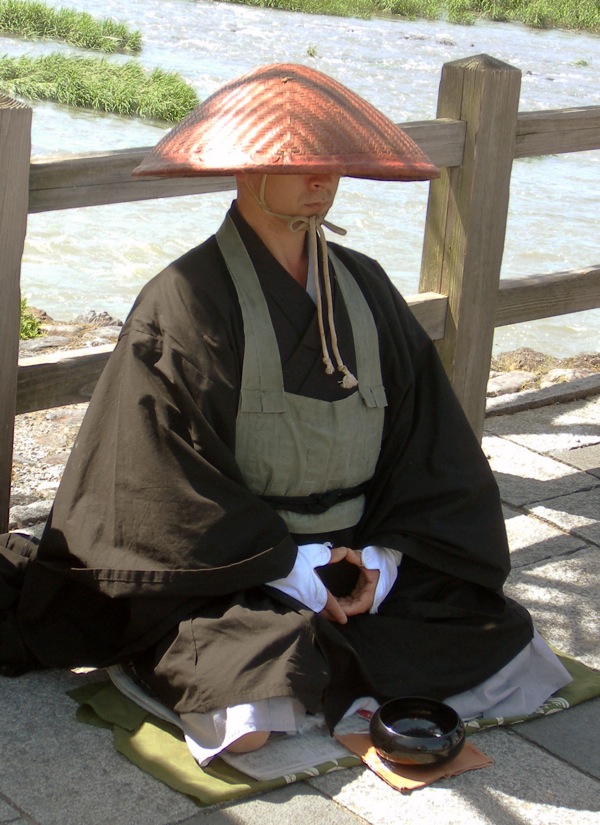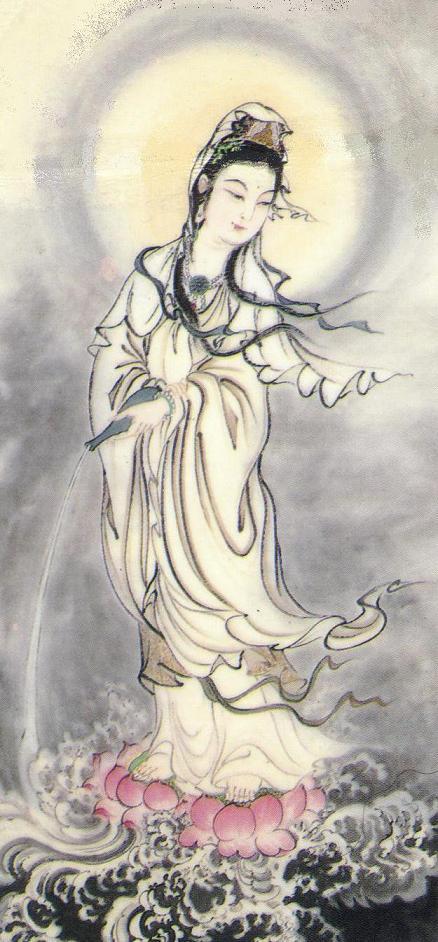Just a quick note that last week the group decided to move the start time of the weekly general club meetings an hour back from 7:30pm to 8:30pm. The end time (10pm) and meeting room (212 Pasquerilla Spiritual Center) remains the same. This was due to a scheduling conflict with another group. The other option was to keep the same times but move it to a smaller room. The group was unanimous in voting for the same room, later start option at the first meeting of the semester.
Category: Uncategorized
Mabon 2015
Mabon 2015 is being planned now!
Date: Tuesday, September 22, 2015
Time: 7-9PM, setup 6PM
Location: on campus, specifics to be decided once reserved
Food Drive: For Hearts for Homeless, our second annual. They are looking for food items as well as personal care items (soaps and the like); a more detailed list will be posted later.
Ritual: meditation labyrinth (similar to last year with modifications)
More details will be posted as determined.
Witches Ball 2015
Witches Ball for 2015
Date: Saturday, October 24, 2015
Time: 7pm-11+
Location: 233A and 233B of the HUB on the University Park campus
Theme: Nightmare Before Christmas
- Live performances by:
- costume contest
- Oogie Boogie’s Casino
- much more in the works…
More information coming soon…
The Mad Tea Party of Ostara – MAR 22, 2015
A very merry un-birthday to Spring!
When: Sunday March 22nd, 2015
Where: Websters Café and Book store
Time: 3:00pm — 6:00pm
Join Silver Circle for an afternoon of
– Crafts with the White Queen
– Mad Hatter ‘s Ritual & High Tea
– Human croquet with the Red Queen
– Alice’s Egg Hunt
Wear your Sunday Strangest!
Witches Ball 2014!
Voodoo! Who do? You do! Do what? Remind me of the Ball…
It’s time for the 2nd Annual Reboot of the Age Old Silver Circle Tradition, the Witches Ball!
- When?
- Friday, October 24th 8:00pm – 12:00am
- Where?
- Heritage Hall of the HUB, Penn State Main Campus.
- Ticket prices?
-
- $3 – Penn State students, faculty and staff (Penn State ID card required for purchase)
- $4 – community members
Come in costume with your gruesome fiends to be judged by your craftsmanship. Learn about what the witches do of old and new. Be rocked by Dirty Agnes (Live Music). Be amazed by the Penn State Belly Dance club (Live Performance). Light refreshments will be available.
Come, if you dare!
Tickets will be sold by club members in the ground floor of the HUB from 11am – 2pm on:
- Thursday, Oct. 16
- Tuesday, Oct. 21
- Thursday, Oct. 23
Mabon 2014 – Candlelit Labyrinth Celebration and Food Drive
We are celebrating the equinox and the start of autumn with a candlelight labyrinth ritual! This will be a great opportunity to meet other pagan students while observing Mabon in a group setting. Community members are invited to attend, and kids are also welcome. Please bring non-perishable human food or pet food to donate to Hearts for Homeless of State College and PAWS. More information is listed below.
Event Location: Old Main Patio in University Park (campus map)
Event TIME Details: Thursday, Sept 25, 2014, 7:00 p.m. to 9:00 p.m.
Directions: Once you get to University Park, your best parking bets are the HUB parking deck ($1/hour but open to the public) or the IST parking lots, a little farther away but free. Please see Penn State University Park Visitor Parking for more information.
Information on the Food drive:
For human food we will be donating to Heart for Homeless.
They are looking for:
Snacks, canned soups, breakfast bars, mini bottles of juices, canned ravioli, microwaveable meals (such as complete meals), water, peanut butter and Jelly.
The pet food will be going to PAWS.
This is what Paws is looking for:
Cat food* (wet & dry), powdered kitten formula.
Dog & puppy food* (wet & dry), dog biscuits (no bones, pig ears, or rawhide), creamy peanut butter.
*Note on the pet food: The shelter pets eat Royal Canin food, other foods that are donated are given to individuals in the community who need assistance in feeding their pets. And the dogs prefer the “ground” wet food.
Candlelit Labyrinth was inspired by the candlelit labyrinth held at Starwood 2014:

Summer meet ups!
Mukashi Banashi – A Selection of Japanese Folktales
Japan has a long held tradition of folk stories, some of which have a literary tradition, and others that have been orally passed down for centuries. This week, our collection was explored and we introduced two very popular tales.
The Quarrel of Monkey and Crab
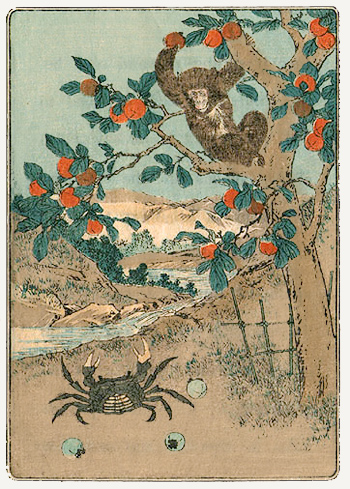 The story of Monkey and Crab (Jp.”Saru Kani Gassen”) follows the story of a mother crab who finds a rice ball (onigiri) and is persuaded by a monkey to trade it for a persimmon seed. After an act of betrayal by the monkey, the crab’s friends; which are often introduced as a chestnut, a mortar, a bee, and a cow pie; come to exact revenge.
The story of Monkey and Crab (Jp.”Saru Kani Gassen”) follows the story of a mother crab who finds a rice ball (onigiri) and is persuaded by a monkey to trade it for a persimmon seed. After an act of betrayal by the monkey, the crab’s friends; which are often introduced as a chestnut, a mortar, a bee, and a cow pie; come to exact revenge.
Appropriate for a folktale, the story has many variations throughout Japan, such as crab dying or simply being harmed, or the list of friends that come to her aid.
Urashima TarÅ
 The story of Urashima TarŠis an extraordinarily old legend of a fisherman with the same name. In most versions of the story, TarŠsaves a sea turtle from being tortured by a group of children. To express his gratitude, the turtle takes him to an undersea palace, which is home to the Dragon god, Ryūjin, and Otohime, a goddess who is said to be an ancestor of the first Japanese emperor. After expressing desire to see his old home again, TarŠis given a box which he is warned never to open. Upon returning to the land, he eventually discovers that 300 years had passed since his departure. Absentmindedly, he opens the box, releasing his essence and causing him to rapidly age 300 years.
The story of Urashima TarŠis an extraordinarily old legend of a fisherman with the same name. In most versions of the story, TarŠsaves a sea turtle from being tortured by a group of children. To express his gratitude, the turtle takes him to an undersea palace, which is home to the Dragon god, Ryūjin, and Otohime, a goddess who is said to be an ancestor of the first Japanese emperor. After expressing desire to see his old home again, TarŠis given a box which he is warned never to open. Upon returning to the land, he eventually discovers that 300 years had passed since his departure. Absentmindedly, he opens the box, releasing his essence and causing him to rapidly age 300 years.
The legend is mentioned as early as the Nara period (8th century CE) and is even referenced in some of the oldest accounts of Japanese mythological history such as the Nihon Shoki. It also bears striking similarity to the Celtic legend of OisÃn.
English translations of these stories may be read below.
Buddhism and Pagan practice
Silver Circle has been an organization established to provide a home for the student Pagan community, and welcome all those interested in earth spirituality, whether they practice or are simply curious. The eclectic nature of the group has attracted people from all walks of life, as we have had active members who identify not only as Pagan, but Hindu, Buddhist, Atheist, and everything in between. This week, our treasurer Dan shared some elements of Buddhism and their possible significance within Paganism.
 To those more familiar with the world’s many traditions, Buddhism falls into one of the big ones. But its origins are rooted in the ancient past and indeed share many elements with other forms of spirituality, both old and modern.
To those more familiar with the world’s many traditions, Buddhism falls into one of the big ones. But its origins are rooted in the ancient past and indeed share many elements with other forms of spirituality, both old and modern.
One of the most apparent recognized practices is that of meditation. Virtually all religious paths offer some form of meditation. To some it is a method of divination. To others, it is a way to find a spiritual guide. To most Buddhists, it is the means by which one is able to achieve the goal of spiritual pursuit: complete enlightenment. Some meditate on bodhisattvas, deities, and other subjects deepen their wisdom through connections with the divine. Most often however, meditation is a very simple (albeit difficult) training of focus, so that the mind may eventually become calm and skilled enough to reach its full psychic potential.
Next is the practice of chanting. Buddhist chants come in many lengths, languages, and applications. Some of the earliest are preserved in the Pali language, and include words of praise, and entire bodies of scripture. As Buddhism spread, different cultures accommodated this practice to fit their own language and understanding. Mantra, the repetition of a certain word or phrase, became a popular form of chant in later developed Buddhist countries. “Om mani padme hum” is one such chant and is associated with Avalokitesvara (Guanyin in Chinese, Kannon in Japanese), who is a bodhisattva revered by many even outside the Buddhist world. The magical element of chanting is believed by many, and is practiced to bring blessings, protection, and upliftment.
Lastly, veneration is important in traditional Buddhist practice. The altar is a sacred place, in which figures of the Buddha or other figures are placed. Offerings of incense, candles, food, and other ornaments are made before the image. This is where Buddhism has faced similar critique as many other faiths as being “idolatrous.” But although it may be argued that some figures known as bodhisattvas are properly worshipped, many Buddhists will refute the claim that they are “idol worshippers.” Instead, ritual performed before an image is to be seen as a method of practicing humility and is actually a veneration not of the figure, but the idea…that is, the Dharma or the teachings.
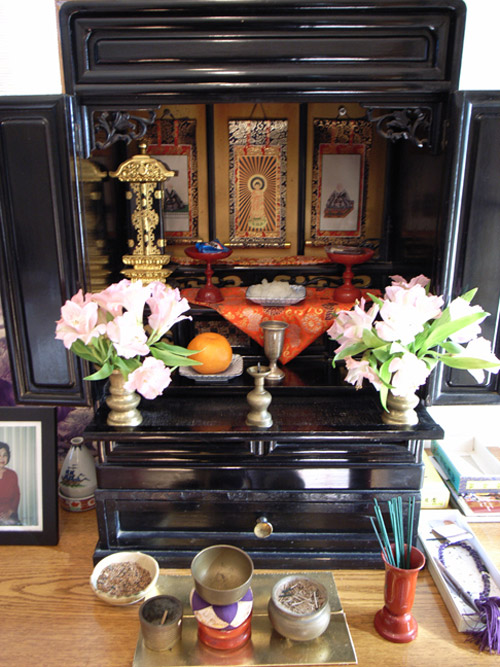
…But tradition and culture brings with it many interesting elements that are revered almost to the status of worship within the natural world. The Bodhi tree, the fig under which the Buddha was enlightened, is recognized by nearly all Buddhists as a sacred object. Remains of deceased figures thought to be enlightened are also venerated, and such reverence for hairs, bones, and teeth thought to belong to the Buddha have become popular as well. And since ancient times, objects representing the Buddha have been thought to hold particularly sacred energy for the worshipper… such as foot prints.
The Bodhi Tree in India
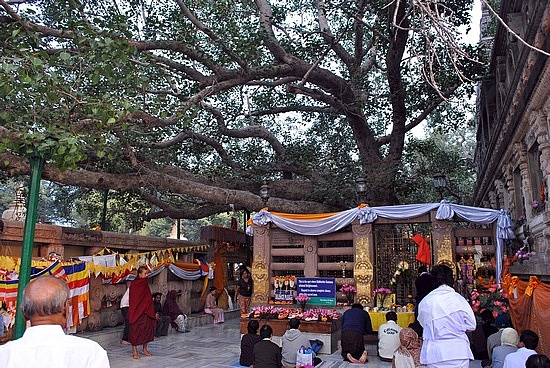
A stupa (or pagoda in East Asia) where sacred remains are kept
 The Buddha’s footprints
The Buddha’s footprints
There are of course many other forms of practice that may be discussed, but for the time being, you can ask yourself the following to foster a closer connection to those of other paths:
What has remained the same?
How does my practice relate to others?
Shaktism – A Doctrine of Power
Shaktism is one of the four main schools of thought in Hinduism. They are all different in many ways and focus on different aspects of divinity.
- Shaktism: followers focus worship upon Shakti or Devi, the Hindu divine mother, as the absolute power
- Shaivism: Shiva is viewed as the Supreme Being, as the creator, preserver,and destroyer
- Vaisnavism: worship focuses on the worship of Vishnu and his avatars, such as Rama and Krishna, as the original deity
